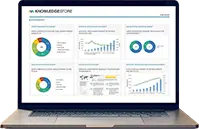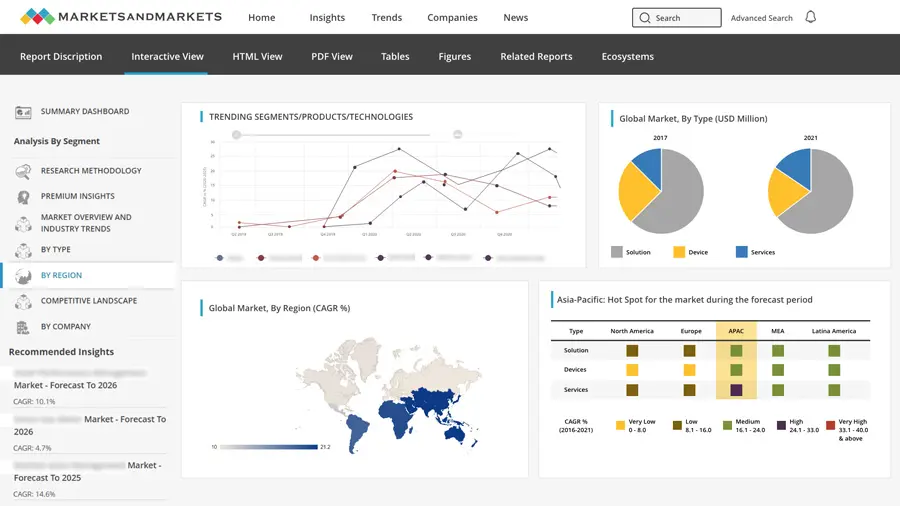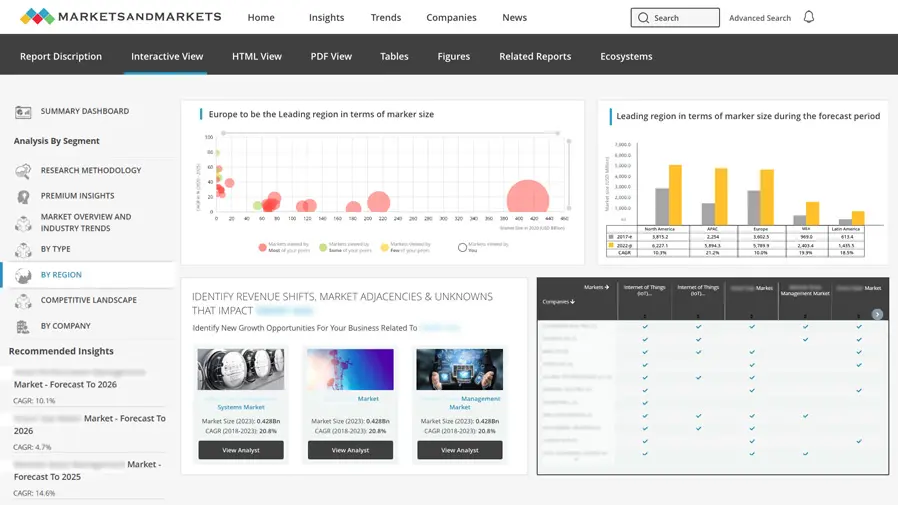Combat Air Teaming System (CATS) Market by Type ( Autonomous Air Vehicles (AAV), Manned-Unmanned Teaming (MUT), Fully Autonomous Combat Systems), Application (Air-to-Air Combat, Intelligence, Surveillance, and Reconnaissance (ISR), Combat Support and Training, Tactical Strike Missions), Platform (Fixed-Wing Aircraft, Rotary-Wing Aircraft, UAVs), Technology (Artificial Intelligence (AI) Integration, Machine Learning (ML) for Autonomous Decision-Making), Region – Forecasts, 2030
The global Combat Air Teaming System (CATS) Market is poised for significant growth in the coming years due to the increasing demand for advanced defense technologies and the shift towards networked, collaborative military systems. Combat air teaming involves the integration of autonomous systems with manned aircraft to enhance operational capabilities, increase mission success, and reduce risk to human pilots. These systems play a crucial role in future military operations, especially in environments with advanced adversaries and complex battlefields.
This market research report offers a comprehensive analysis of the CATS market, covering the latest trends, growth drivers, and challenges influencing the sector. It includes detailed market segmentation, growth forecasts, and competitive landscapes to provide an in-depth view of the market dynamics. The report highlights key players, emerging technologies, and strategic developments, offering valuable insights for stakeholders, investors, and decision-makers in the defense and aerospace sectors.
The report also explores the evolving landscape of military aviation, focusing on the integration of unmanned and manned platforms, and the increasing role of artificial intelligence, machine learning, and cloud-based technologies in the development of combat air teaming systems.
By Attractive Opportunities in the Combat Air Teaming System (CATS) Market:
The Combat Air Teaming System (CATS) market is witnessing significant growth due to various attractive opportunities that are reshaping the landscape of defense technologies. Key opportunities include the rising demand for unmanned and autonomous systems, advancements in artificial intelligence (AI) and machine learning (ML), and the growing need for cost-effective and efficient military operations. Governments worldwide are increasing their defense budgets, creating opportunities for CATS solutions to be integrated into existing air forces, enhancing mission success and reducing human pilot risk. Additionally, collaborations between defense contractors and technology innovators are opening doors to new markets, particularly in emerging economies with expanding defense capabilities.
Global Combat Air Teaming System (CATS) Market Dynamics:
The global CATS market is driven by several dynamic factors. Key drivers include the technological advancements in autonomous systems, the rising adoption of AI-driven solutions for combat missions, and the increasing need for enhanced operational efficiency in defense strategies. The CATS model, integrating manned and unmanned aircraft, provides operational flexibility, greater mission effectiveness, and cost-saving advantages. However, the market also faces challenges such as high development costs, technological integration complexities, and regulatory hurdles surrounding the use of autonomous systems in defense applications. Despite these challenges, the overall market outlook remains positive, with technological innovations and defense budget increases creating favorable conditions for growth.
Global Combat Air Teaming System (CATS) Market Ecosystem Analysis:
The CATS market ecosystem involves various players across multiple sectors, including aerospace and defense contractors, technology providers, and government defense agencies. Key players in the ecosystem include prime contractors, such as Lockheed Martin, Boeing, and Northrop Grumman, which are driving the development of advanced air teaming technologies. In addition, emerging companies specializing in AI, robotics, and unmanned systems are contributing to the evolution of CATS platforms. This ecosystem also includes government bodies and military forces that play a crucial role in shaping market demand through defense procurements, funding, and adoption of new technologies. Furthermore, industry partnerships and collaborations between defense agencies and technology companies are key enablers in accelerating innovation within the CATS ecosystem.
Key Market Players:
The Combat Air Teaming System (CATS) market is highly competitive, with key players constantly evolving their strategies to maintain leadership. Some of the leading companies include:
- Lockheed Martin: A prominent player in aerospace and defense, Lockheed Martin is a key contributor to developing and integrating autonomous teaming solutions in combat air systems.
- Boeing: Known for its advanced aircraft and autonomous technology, Boeing plays a crucial role in the development of manned-unmanned teaming platforms.
- Northrop Grumman: Specializing in unmanned systems, Northrop Grumman is at the forefront of CATS technology, focusing on enhancing autonomous capabilities and operational efficiency.
- BAE Systems: Engaged in creating advanced defense solutions, BAE Systems is actively involved in developing innovative CATS models.
- General Atomics Aeronautical Systems: A key player in UAV technologies, General Atomics contributes to the autonomous systems that enable effective air teaming.
Market Insight on Combat Air Teaming System (CATS) Market
The Combat Air Teaming System (CATS) market is witnessing a transformative phase in the defense and aerospace sectors, fueled by rapid technological advancements and an increased focus on operational efficiency in military aviation. As nations globally continue to enhance their defense capabilities, the integration of autonomous systems with manned platforms has become a pivotal area of development. CATS offers a promising solution by enabling seamless coordination between manned and unmanned aircraft, providing superior operational flexibility, extended mission endurance, and reduced risks to human pilots.
Technological Innovation Driving Growth
One of the primary factors propelling the CATS market is the continuous innovation in autonomous technologies, particularly in artificial intelligence (AI), machine learning (ML), and robotics. These technologies allow unmanned air vehicles (UAVs) to operate in conjunction with manned aircraft, executing a wide range of missions such as intelligence, surveillance, reconnaissance (ISR), combat support, and tactical strike operations. As the development of these systems becomes more sophisticated, autonomous UAVs are increasingly capable of making real-time decisions, adapting to complex environments, and improving mission outcomes.
Rising Demand for Networked, Collaborative Military Systems
Modern warfare has shifted towards more networked and collaborative approaches, necessitating systems that can operate cohesively across different domains. CATS solutions are designed to integrate seamlessly into these multi-domain operations, where unmanned systems assist manned aircraft in various roles, such as air-to-air combat and air-to-ground support. The ability of UAVs to function as force multipliers enhances the strategic capabilities of military forces, allowing them to complete missions with greater efficiency and less risk to personnel. This collaboration between manned and unmanned systems is crucial in contemporary defense strategies, especially in contested environments where advanced adversaries may deploy sophisticated countermeasures.
Increasing Military Budgets and Global Defense Modernization
Global defense spending has been rising, driven by geopolitical uncertainties and the need to modernize military forces with cutting-edge technologies. The U.S., China, and European countries are increasing their investments in autonomous systems and AI-driven defense technologies. This growing budget allocation is expected to significantly impact the adoption and development of CATS solutions. In particular, nations with advanced air forces are actively seeking cost-effective, mission-enhancing solutions like CATS to maintain a technological edge over potential adversaries.
Moreover, emerging markets in Asia-Pacific, the Middle East, and Latin America are also exploring the potential of CATS as they seek to modernize their defense capabilities. This growing adoption is creating attractive opportunities for both established defense contractors and emerging technology companies in the CATS ecosystem.
Cost Efficiency and Risk Mitigation
Another significant advantage driving the adoption of CATS is its ability to provide cost-effective solutions compared to traditional manned missions. By utilizing UAVs to perform high-risk tasks, such as engaging in combat or gathering intelligence in hostile environments, military forces can reduce the potential loss of human life. Additionally, unmanned systems can operate for extended periods without the need for rest or recovery, offering higher mission endurance. This enhanced operational efficiency reduces overall mission costs while maintaining a high level of effectiveness.
Challenges and Barriers to Adoption
Despite the promising growth prospects, the CATS market faces several challenges. Technological integration remains a significant barrier, as ensuring seamless communication and coordination between manned and unmanned platforms requires overcoming complex technological hurdles. The high development and maintenance costs associated with CATS systems are another challenge, especially for smaller defense budgets or emerging economies looking to adopt these technologies.
Furthermore, regulatory hurdles surrounding the use of autonomous military systems continue to present challenges. Legal and ethical considerations, such as accountability in combat and the use of AI-driven decisions in life-or-death situations, remain hot topics for debate within the defense community. Governments and defense organizations must work together to create clear regulations that balance innovation with safety and accountability.
Looking ahead, the Combat Air Teaming System market is expected to grow at a strong pace, driven by advancements in AI, machine learning, and unmanned aerial vehicle (UAV) technologies. The market's expansion will be fueled by the increasing demand for more efficient, flexible, and autonomous military solutions that can enhance both offensive and defensive capabilities.
Additionally, the growing collaboration between defense contractors and technology innovators is expected to play a pivotal role in accelerating the development of next-generation CATS solutions. New market entrants and strategic partnerships will likely intensify competition, driving further innovation and the creation of more capable, cost-effective systems.
The Combat Air Teaming System (CATS) market is positioned for significant growth in the coming years as both technological advancements and geopolitical factors drive demand for more advanced, integrated, and autonomous defense solutions. As the defense industry continues to embrace AI and UAV technologies, CATS will be at the forefront of transforming military operations and redefining the future of aerial combat.

Table of Contents
-
Executive Summary
- Market Overview
- Key Findings
- Market Trends
- Competitive Landscape
-
Introduction
- Definition of Combat Air Teaming System (CATS)
- Research Methodology
- Market Segmentation
-
Market Dynamics
-
Market Drivers
- Rising Defense Budgets Globally
- Technological Advancements in Unmanned Systems
- Increasing Demand for Networked Military Operations
-
Market Challenges
- High Development and Maintenance Costs
- Technological Limitations
-
Market Opportunities
- Emerging Markets and Regional Collaborations
- Artificial Intelligence and Machine Learning Integration
-
Market Drivers
-
Combat Air Teaming System Market, By Type
- Autonomous Air Vehicles (AAV)
- Manned-Unmanned Teaming (MUT)
- Fully Autonomous Combat Systems
-
Combat Air Teaming System Market, By Application
- Air-to-Air Combat
- Intelligence, Surveillance, and Reconnaissance (ISR)
- Combat Support and Training
- Tactical Strike Missions
-
Combat Air Teaming System Market, By Platform
- Fixed-Wing Aircraft
- Rotary-Wing Aircraft
- UAVs (Unmanned Aerial Vehicles)
-
Combat Air Teaming System Market, By Technology
- Artificial Intelligence (AI) Integration
- Machine Learning (ML) for Autonomous Decision-Making
- Cloud-Based Systems for Data Sharing
-
Regional Analysis
-
North America
- U.S.
- Canada
-
Europe
- UK
- Germany
- France
-
Asia Pacific
- China
- Japan
- India
-
Middle East & Africa
- GCC Countries
- Rest of the Middle East
-
Latin America
- Brazil
- Mexico
-
North America
-
Competitive Landscape
- Overview of Key Players
- Market Share Analysis
-
Strategic Developments
- Mergers & Acquisitions
- Partnerships & Collaborations
- Product Launches
- Key Strategies Adopted by Leading Companies
-
Key Industry Insights
- Future Trends in CATS Technology
- Government Investments in Defense Automation
- Integration with Advanced Military Systems
-
Market Forecasts and Trends (2023–2030)
- Revenue Forecast by Segment and Region
- Market Size and Growth Rates
-
Conclusion
- Key Takeaways
- Future Outlook
-
Appendix
- List of Abbreviations
- Glossary of Terms
- Sources and References















Growth opportunities and latent adjacency in Combat Air Teaming System (CATS) Market